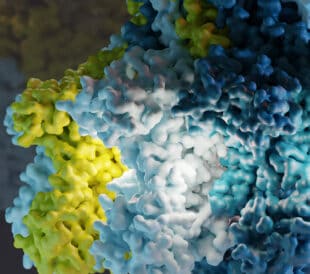Advancing liver disease research with blood vessel imaging at single cell resolution
Chronic liver diseases encompass a wide range of disorders that result in physical damage and scarring to the liver over time (i.e., fibrosis and cirrhosis). This scarring can put pressure on the complex vasculature of the liver and, in some cases, even cut off vital veins and arteries. Understanding the progression and impact of fibrosis requires high-resolution, 3D information on vascular structures, ideally at single-cell resolution.
Approaches such as micro-computed tomography (microCT) and phase-contrast computed tomography (PCCT) have provided numerous insights into the vascular structure of the liver image limited areas of the organ at a time. This means that capturing a full hepatic structure in the intact liver lobe at cellular resolution is still a challenge.
Nevertheless, such information could provide critical insights for liver disease research, which is why a team of scientists led by Professor Hui Gong (Huazhong University of Science and Technology) proposed a new approach for liver imaging, high-definition fluorescent micro-optical sectioning tomography, which combines a line illumination system with microscopic serial sectioning.

Fluorescent micro-optical sectioning tomography workflow utilized by Zhang et al. Figure reproduced in part from Reference 1 under CC BY 4.0.
This technology allowed them to acquire cytoarchitectural and vascular structure information for intact liver lobes at single-cell resolution. Structures such as hepatic and portal veins were identified through the cytoarchitecture while vascular information allowed them to identify other interesting structures such as the hepatic artery and lymphatic vessels.
Amira Software facilitates data reconstruction of hepatic and vascular structures
Combining and segmenting such large datasets can take a matter of weeks. Data processing software can significantly streamline this work, even allowing some analyses to be performed automatically. In this study, Thermo Scientific Amira Software was used for a range of identification and reconstruction, allowing the researchers to distinguish between the hepatic and portal vein and to correct for errors such as missing or misidentified branches. The Filament Editor Workroom in Amira Software was used to trace vessels such as the hepatic artery, bile ducts, and lymphatic vessels. The Autoskeleton tool was used to skeletonize the sinusoids. Manual segmentation and reconstruction were used to find the local peribiliary plexus structure.
The observation, reconstruction, and visualization of these different structures revealed important differences in thickness and shape between the hepatic artery and lymphatic vessel. (A thicker wall was observed for the hepatic artery compared to the lymphatic vessels.) The researchers were also able to understand the distribution of portal and hepatic veins.

Reconstructed liver blood vessels, bile ducts, and lymphatic vessels. Figure reproduced in part from Reference 1 under CC BY 4.0.
The future of imaging in liver disease research
As indicated by the authors, this analytical pipeline “will help research into liver diseases and evaluation of medical efficacies in the future.” It provided researchers with a holistic look at the vascular structure of liver lobes, and it has the potential to provide even further detail on the fine orientation and branching of vessels with additional samples and fluorescent labeling. Overall, such high-resolution structural mapping has exciting implications for liver disease research. By observing the influence diseases and their treatments have on the liver at single-cell resolution, more effective and targeted treatments can be created, and their impacts can be directly monitored.
Read the full article in Nature Communications Biology:
- Zhang, Q., Li, A., Chen, S. et al.Multiscale reconstruction of various vessels in the intact murine liver lobe. Commun Biol 5, 260 (2022). https://doi.org/10.1038/s42003-022-03221-2




Leave a Reply